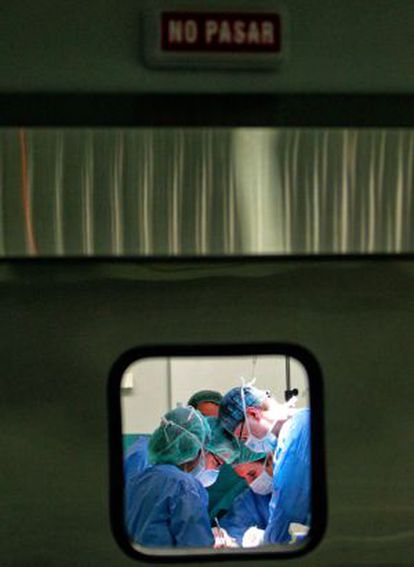Would you donate a kidney to a complete stranger?
Since 2010, 231 people have applied for a program run by Spain’s Transplant Organization


In 2011, a Catalan priest became Spain’s first “Good Samaritan” by donating a kidney to a complete stranger.
This initiated Spain’s first altruistic living donor chain of transplants, which involved six people, three organs and two hospitals in Barcelona and Granada.
In the last five years, the National Transplant Organization (ONT) has received applications from 231 would-be altruistic donors.
The concept of the Good Samaritan was created in 2010 with the goal of reducing wait times for people with end-stage renal disease.
While there are many volunteers, few have made it past the ONT’s strict screening. The agency has rejected 93 percent of applications, and in the four years since the system was introduced, there have only been seven transplants from an altruistic living donor.
A third are rejected because of medical reasons, including psychiatric problems. Around half are grouped in a category known as “lack of interest,” which includes people who cannot be located again after first contact, as well as those who back out after learning everything involved in kidney donation.
“We wanted to be tremendously conservative, very strict,” says ONT director Rafael Matesanz. “Whenever we felt that the donors might sustain any damage, either physical or moral, we rejected them. Many of those candidates would have been able to donate in any other country, but not here.”
We’ve had many calls from retired doctors”
Miriam Ormeño, sociologist at ONT
Other reasons for turning a candidate away include everything from lack of family support to a precarious employment situation that might cause the donor to lose their job if they push ahead with the procedure.
“We also received applications from prison inmates, but we cannot accept those,” adds Matesanz.
Miriam Ormeño, a sociologist at ONT, is part of the team that fields the first calls from potential donors.
“We have very long conversations, at least 40 minutes and up to an hour and a half, during which we try to make sure they realize everything involved in the decision they wish to make. The donors need to be perfectly aware of what they are facing; among other things, the fact that they will never meet the recipient of their organ,” she says.
Ormeño says this last point often requires some reiteration, as a lot of people call in requesting to become donors for specific children after hearing about a campaign on television or via the social networks. “We are forced to explain that things don’t work that way.”
Once accepted, the Good Samaritan, who always needs to be a very healthy and balanced person, begins a process known as a living donor transplant chain: this first kidney goes to a patient with a relative who is willing to donate a kidney to someone else, who also has a family member willing to donate one, and so on.
The longest altruistic donor chain in Spain achieved six kidney transplants in April 2014. The ball got rolling with a kidney from an altruistic donor, and a recipient on a waiting list for a kidney from a dead donor completed the chain. In the United States, there have been chains comprising as many as 30 transplants at a time.
For years the ONT has been encouraging living donor kidney transplants as a way to obtain more organs for patients with chronic renal disease. The number of dead donors is insufficient to cover demand: the difference between those who need one and those who receive one is around 2,000 people a year.
Around 30 percent of people willing to donate a kidney to an ill relative cannot do so because of incompatibility problems. This is the origin of the Good Samaritan principle.
“Until early this century it was believed that there were risks involved with living donations, but different studies and many thousands of patients have shown that it is safe,” says Matesanz. “But there is no such thing as zero risk in medicine, and there is always the surgical risk that comes with any operation, which is three [deaths] in 10,000.”
Anywhere between three and five months can elapse before the first call and the kidney removal operation. In the meantime, candidates meet with psychologists, psychiatrists and other medical experts who carry out a complete checkup of the would-be donor.
Ormeño says the first screening rules out as many as 67 percent of candidates.

“We have specific training and we know how to extract further information if something sounds not quite right,” she explains, adding that they look out for signs of depression or psychiatric issues. “There are people looking for social recognition or a boost to their self-esteem, who tell themselves ‘I am going to help someone and it’s going to make me feel better.’ Some people have gone as far as to tell me that they want to donate both kidneys.”
Physical conditions such as high blood pressure, obesity and diabetes are risk factors that will get a candidate rejected. Being older is another.
“We’ve had many calls from retired doctors,” says Ormeño.
If there is anything common to all the Good Samaritans, it is their spirit of solidarity.
“These people are very active socially, they volunteer at non-profits and patient associations, or have worked in hospitals and are familiar with the disease,” she adds.
ONT chief Matesanz describes them as “very special people who want to help others and have a history of performing acts of solidarity.”










































